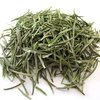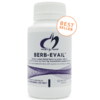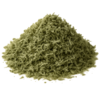Overview
European angelica is a biennial or perennial herb native to northern and eastern Europe (Leung and Foster, 1996) and parts of Asia (Budavari, 1996; Wichtl and Bisset, 1994). Its natural habitat includes Iceland, Scotland, Holland, and Lapland (Grieve, 1979; Leung and Foster, 1996). In Germany, it is cultivated in the states of Bavaria and Thüringen (Lange and Schippmann, 1997). The material of commerce is obtained from northern Europe, including the United Kingdom (BHP, 1996), almost entirely from plants cultivated in the Netherlands, Poland, and Germany, and to a lesser extent from Belgium, Italy, and the Czech Republic (Wichtl and Bisset, 1994).
Angelica has been used for centuries in European medicine as an expectorant for bronchial illnesses, colds and coughs, and also as a digestive aid for stomach disorders (Leung and Foster, 1996; Wren, 1988). By the fifteenth century it was in popular use. In the English herbal entitled Paradisus Terrestris, published in 1629 C.E. by John Parkinson, angelica was reported to be one of the most important medicinal herbs of that time (Bown, 1995; Grieve, 1979).
In Germany, angelica root is official in the German Pharmacopeia (DAB 10, 1993), listed in the German Drug Codex (DAC, 1986), approved in the Commission E monographs (BAnz, 1998), and the tea form is official in the German Standard License monographs (Braun et al., 1997). Clinically, it is mainly used as an aromatic and bitter tonic for the digestive system, used to stimulate the appetite, and to treat dyspepsia. It is commonly employed as a component in bitters and liqueurs such as Bénédictine, Boonekamp, and Chartreuse (Weiss, 1988; Wichtl and Bisset, 1994) and also as a component in numerous gastrointestinal, cholagogue, and biliary remedies (Wichtl and Bisset, 1994). In German pediatric medicine, angelica root is used for treatment of gastrointestinal disorders. For example, a Commission E approved 'stomach tea' is composed of 20% angelica root, 40% gentian root (Gentiana lutea L.) and 40% caraway seed (Carum carvi L.) (Schilcher, 1997). In the United States, angelica root was formerly official in the United States Pharmacopeia and National Formulary (Leung and Foster, 1996).
German pharmacopeial grade angelica root consists of the whole dried rhizome and roots of Angelica archangelica L., carefully dried at below 40° C. It must contain not less than 0.25% (v/m) volatile oil with reference to the dried drug. It may contain no more than 5% stem and leaf fragments and no more than 5% discolored components. Botanical identity must be confirmed with thin-layer chromatography (TLC), macroscopic and microscopic examinations, and organoleptic evaluation. Additionally, a test for adulteration with lovage root (Levisticum officinale) is required (DAB 10, 1993). The Austrian Pharmacopeia requires not less than 0.3% volatile oil (ÖAB, 1983; Wichtl and Bisset, 1994). Additionally, the British Herbal Pharmacopoeia requires it to be harvested in Autumn and that it should contain not less than 30% water-soluble extractive (BHP, 1996). The German Drug Codex also requires not less than 30% extractive (DAC, 1986; Wichtl and Bisset, 1994).
Description
Angelica root consists of the dried root and rhizome of A. archangelica L. [Fam. Apiaceae], and their preparations in effective dosage. The root and rhizome contain essential oil, coumarin, and coumarin derivatives.
Chemistry and Pharmacology
Angelica root contains 0.35-1.9% volatile oil, of which 80-90% are monoterpene hydrocarbons such as b-phellandrene (13-28%), a-phellandrene (2-14%) and a-pinene (14-31%); sesquiterpenes (Wichtl and Bisset, 1994); 0.3% angelic acid (Budavari, 1996; Weiss, 1988); 6% resin; sterols (e.g., sitosterol); phenolic acids such as chlorogenic and caffeic acids (Budavari, 1996); fatty acids (e.g., palmitic, oleic, and linoleic acids); coumarins (approximately 0.2% osthol) and furanocoumarins (e.g., angelicin, bergapten); sugars; and tannins (Bruneton, 1995; Leung and Foster, 1996; Wichtl and Bisset, 1994).
The Commission E reported antispasmodic and cholagogue actions, and that it stimulates the secretion of gastric juices.
The British Herbal Pharmacopoeia reported aromatic bitter and spasmolytic actions (BHP, 1996). The Merck Index reported its therapeutic category as carminative, diaphoretic, and diuretic (Budavari, 1996). In addition, animal studies using the root oil have documented antibacterial activity against Mycobacterium avium and antifungal activity against 14 types of fungi (Opdyke, 1975). In vitro, angelica root extracts of various species have demonstrated calcium-antagonist-like effects, which may be relevant for treatment of cardiovascular disease (Leung and Foster, 1996).
Some of its early uses are at least partially supported by in vitro studies of angelica's active coumarin and furanocoumarin constituents. One of these, angelicin, relaxes smooth muscles in vitro, including those in the gastrointestinal and respiratory tracts. Angelica also relaxes tracheal (Reiter and Brandt, 1985) and vascular smooth muscles in vitro. This latter effect is likened to calcium-antagonist mechanisms (Härmälä et al., 1992). European angelica may also increase uterine contractions, similar to the effects shown by Chinese angelica, A. sinensis (dong quai) in anesthetized rabbits (Harada et al., 1984).
Uses
The Commission E approved angelica for loss of appetite, peptic discomforts such as mild spasms of the gastrointestinal tract, feeling of fullness, and flatulence.
The German Standard License indicates the use of angelica root tea for treatment of complaints such as feeling of fullness, flatulence, and mild cramp-like gastrointestinal disturbances, as well as stomach conditions such as insufficient formation of gastric juice (Braun et al., 1997). In India, it is used to treat anorexia nervosa and flatulent dyspepsia (Karnick, 1994).
Contraindications
Interactions with Other Drugs
Side Effects
The furanocoumarins present in angelica root sensitize the skin to light. Subsequent exposure to UV radiation can lead to inflammation of the skin. During treatment with the drug or its preparations, prolonged sun-bathing and exposure to intense UV radiation should be avoided.
Use During Pregnancy and Lactation
Not recommended during pregnancy (McGuffin et al., 1997). No restrictions known during lactation.
Dosage and Administration
Unless otherwise prescribed: 4.5 g per day of cut dried root and other oral galenical preparations.
Dried root and rhizome: 1-2 g, three times daily (BHP, 1983; Karnick, 1994; Newall et al., 1996).
Decoction: Place 1.5 g fine-cut root in 150-250 ml cold water, bring to a boil and simmer for approximately 10 minutes in a covered vessel (Meyer-Buchtela, 1999; Wichtl and Bisset, 1994). Or: Simmer 2-4 g in 150 ml boiling water for approximately 10 minutes. Drink warm, several times daily one half-hour before meal times (Braun et al., 1997; Meyer-Buchtela, 1999).
Infusion: Steep 2-4 g in 150 ml boiled water for approximately 10 minutes. Drink warm, several times daily one half-hour before meal times (Braun et al., 1997; Meyer-Buchtela, 1999).
[Note: According to the Austrian Pharmacopeia, the average single dose for angelica root tea infusion is 1.5 g per cup (Meyer-Buchtela, 1999; ÖAB, 1991).]
Fluidextract 1:1 (g/ml): 1.5-3 ml (Commission E); 0.5-2.0 ml, three times daily (BHP, 1983; Karnick, 1994; Newall et al., 1996).
Tincture 1:5 (g/ml): 1.5 ml (Commission E); 0.5-2.0 ml, three times daily (BHP, 1983; Newall et al., 1996).
Essential oil (Oleum Angelicae): 10-20 drops (Commission E).
Ref: Excerpt from Herbal Medicine: Expanded Commission E Monographs
 Please select a version. Delivery Estimator is only available for products which can be added to the shopping basket.
Please select a version. Delivery Estimator is only available for products which can be added to the shopping basket.





























